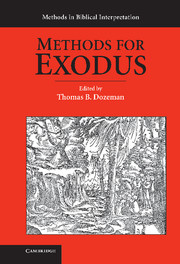Book contents
1 - Literary and Rhetorical Criticism
Published online by Cambridge University Press: 05 June 2012
Summary
LITERARY AND RHETORICAL CRITICISM: A BRIEF HISTORY
Since ancient times, interpreters have recognized the Bible's capacity as literature to delight, disturb, challenge, teach, move, or transform readers and hearers. The various methods under the broad umbrella of literary and rhetorical criticism seek to analyze in detail the cluster of words, literary forms, styles, tropes, and strategies embedded within biblical texts that work together to provoke such a wide range of reactions in audiences. Literary methods involve close readings of biblical texts with careful attention to their literary contours and textures. The questions that arise in literary approaches range widely from detailed attention to the meaning of individual words and sentences to the significance and shape of successively larger literary contexts in which the given text is situated. What is the effect of the Bible's use of one word rather than another in a given text? In what way is the word order of a sentence significant for its meaning? What role does a specific metaphor or motif play within a biblical text? What is the overall plot of a biblical narrative, and how does a particular scene or episode fit within it? From whose perspective is the story told? How do allusions or echoes from other texts shape interpretation? How are characters developed and to what end? Should an interpreter fill the gaps in a story or leave them open?
- Type
- Chapter
- Information
- Methods for Exodus , pp. 13 - 54Publisher: Cambridge University PressPrint publication year: 2010



